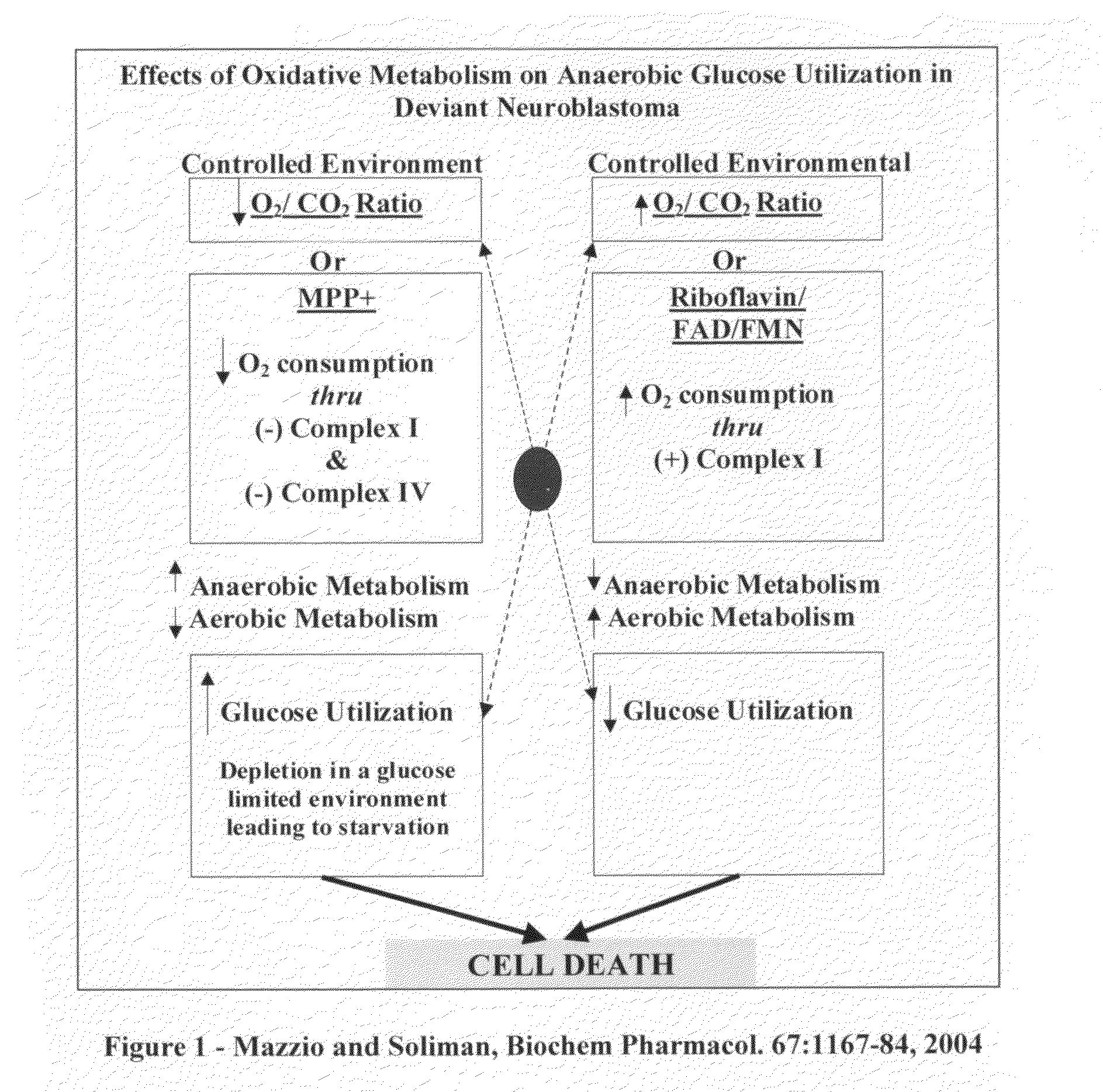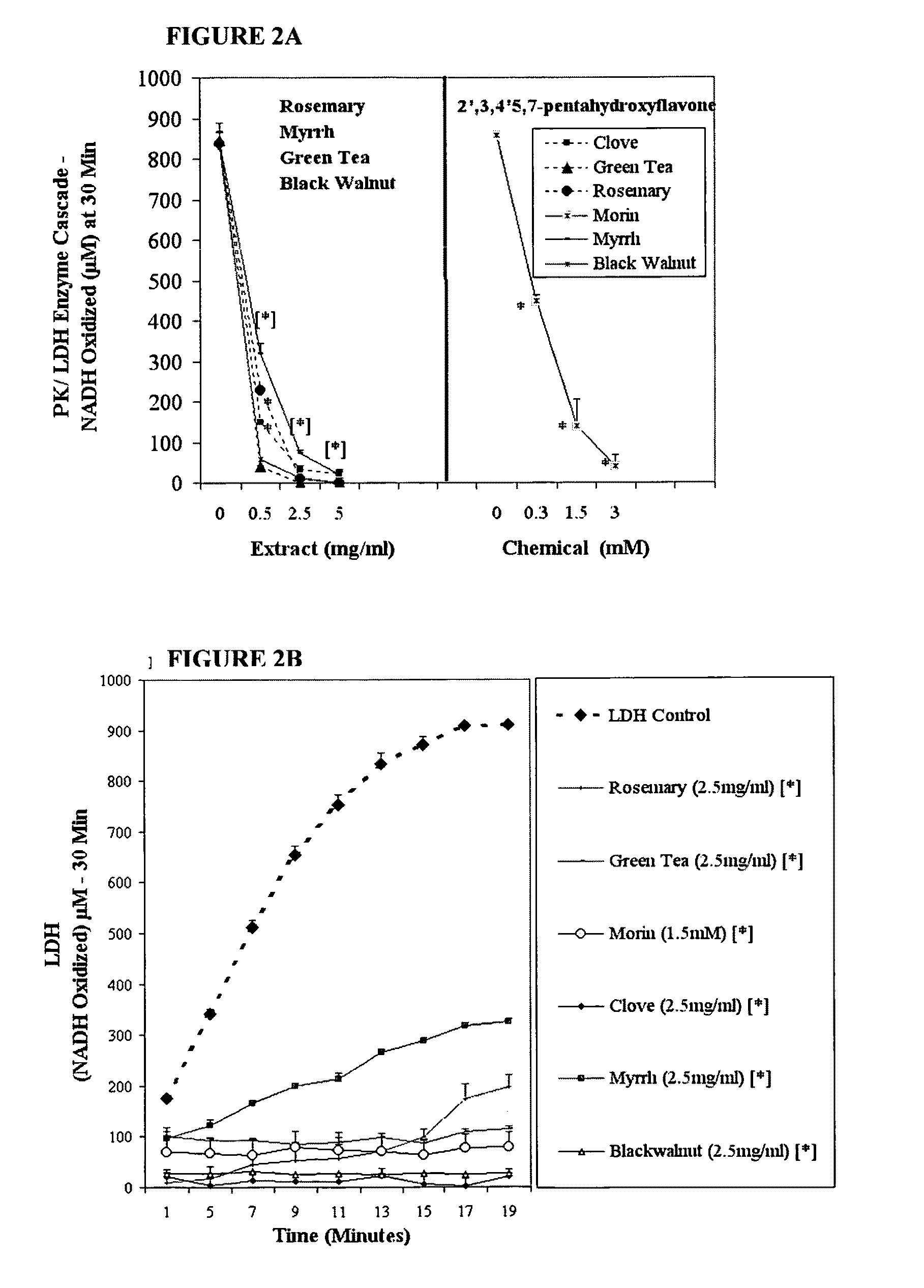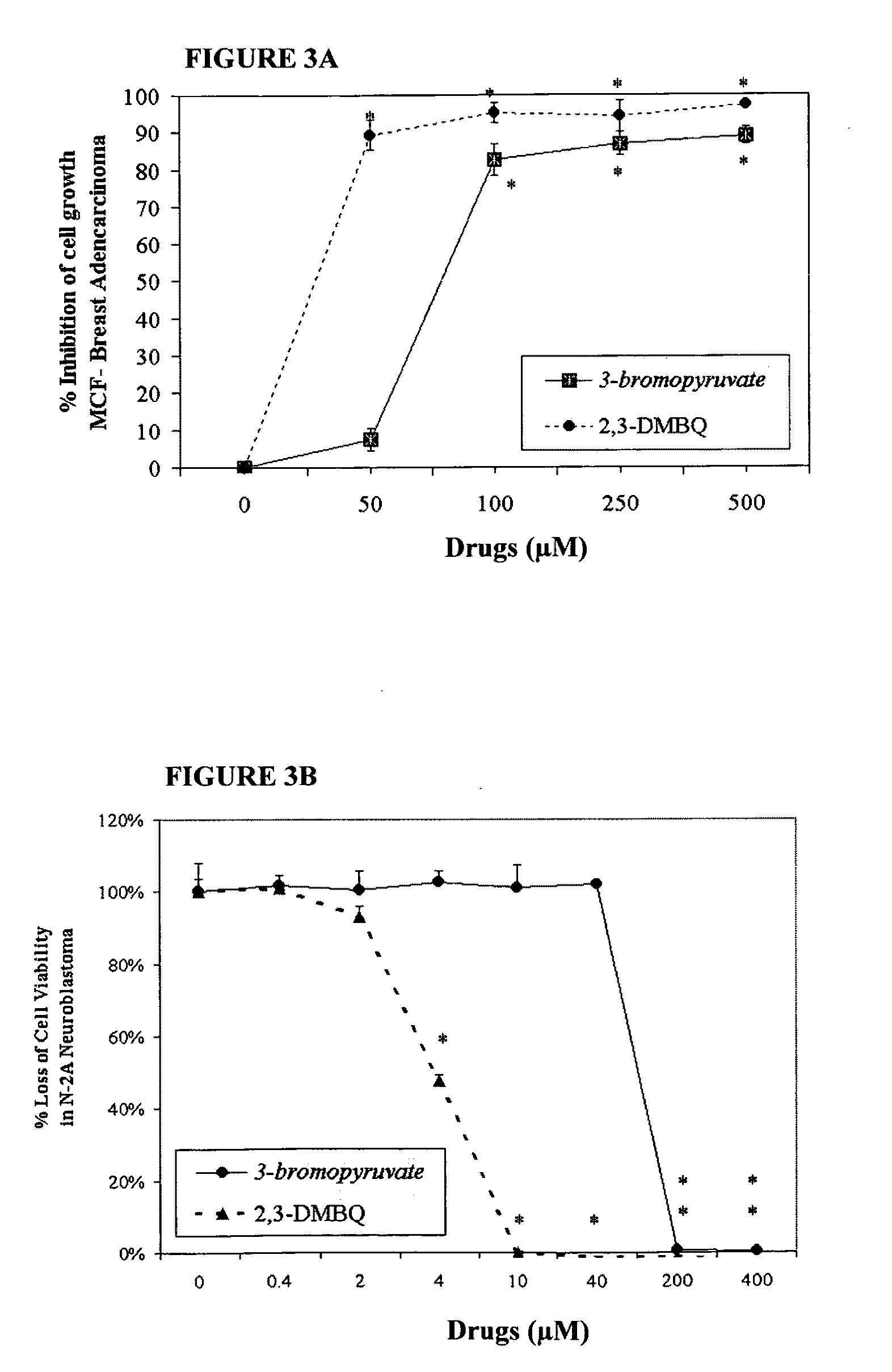Nutraceutical composition and method of use for treatment / prevention of cancer
a technology of cancer and composition, applied in the field of nutraceutical composition and method of use for cancer treatment and/or prevention, can solve the problems of affecting the utility of anaerobic glucose, lack of therapeutic value in clinical trials, and inability of patients to communicate their practices to primary care physicians, so as to achieve greater understanding and weight loss
- Summary
- Abstract
- Description
- Claims
- Application Information
AI Technical Summary
Benefits of technology
Problems solved by technology
Method used
Image
Examples
Embodiment Construction
[0038]The embodiment of the present invention describes a holistic chemotherapy agent for treatment / prevention of cancer in humans and animals. Briefly, ubiquiones, thymoquinone, tocopherol quinone, 2,3-dimethoxy-5-methyl-1,4-benzoquinone (ubiquinone (O)) herein termed “DMBQ” and the short chain ubiquinones are present to adversely target an unknown target causing collapse of anaerobic metabolism of tumor cells. The ubiquinones also play an important role in oxidative phosphorylation as they shuffle electrons to flavoprotein enzymes (requiring FMN prosthetic groups) and cytochromes, thereby translocating protons to generate a proton-motive force by which oxidative phosphorylation leads to aerobic production of ATP. Riboflavin, FAD and FMN in the formula serve to augment electron transport and the function of ubiquinone oxidoreductases, to boost O2 utilization by the mitochondria (Mazzio and Soliman, Biochem Pharmacol. 67:1167-84, 2004; publication summary of FIG. 1. Agents that inhi...
PUM
 Login to View More
Login to View More Abstract
Description
Claims
Application Information
 Login to View More
Login to View More - R&D
- Intellectual Property
- Life Sciences
- Materials
- Tech Scout
- Unparalleled Data Quality
- Higher Quality Content
- 60% Fewer Hallucinations
Browse by: Latest US Patents, China's latest patents, Technical Efficacy Thesaurus, Application Domain, Technology Topic, Popular Technical Reports.
© 2025 PatSnap. All rights reserved.Legal|Privacy policy|Modern Slavery Act Transparency Statement|Sitemap|About US| Contact US: help@patsnap.com



